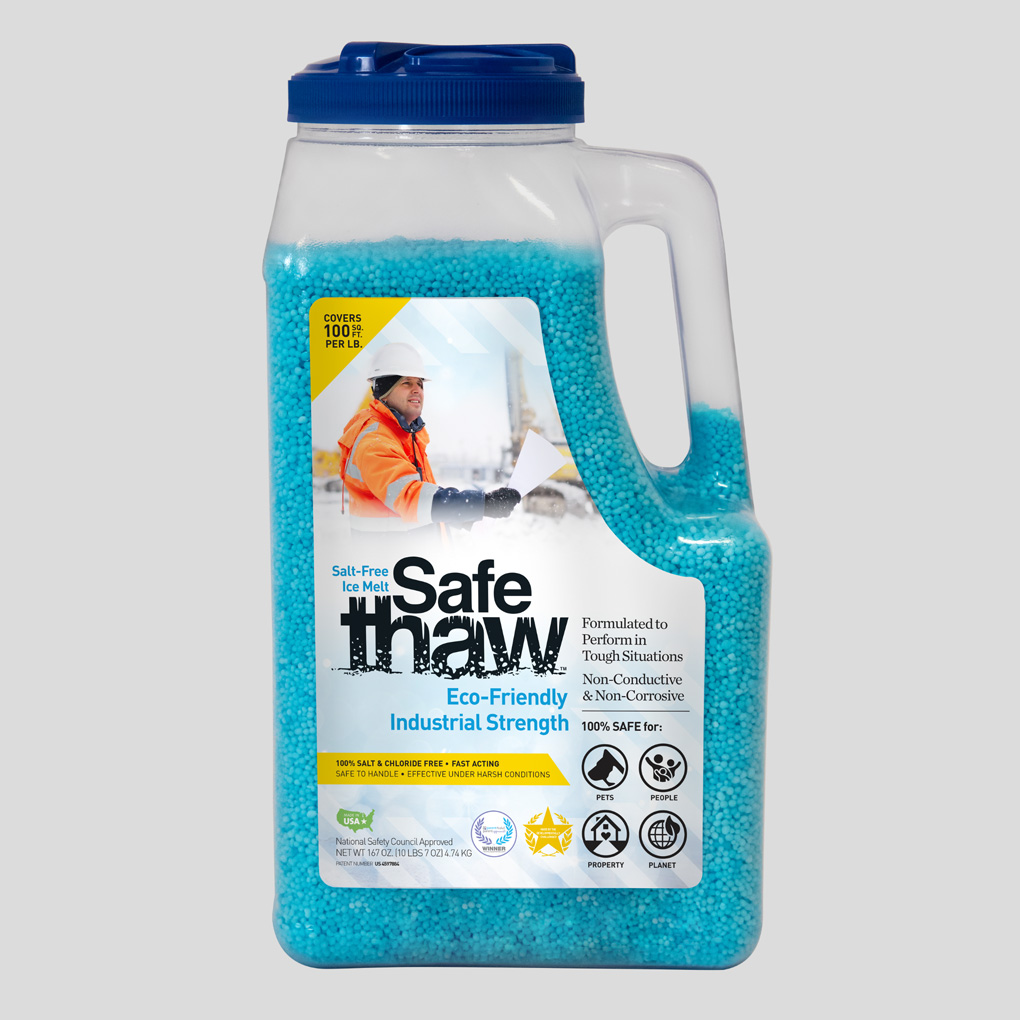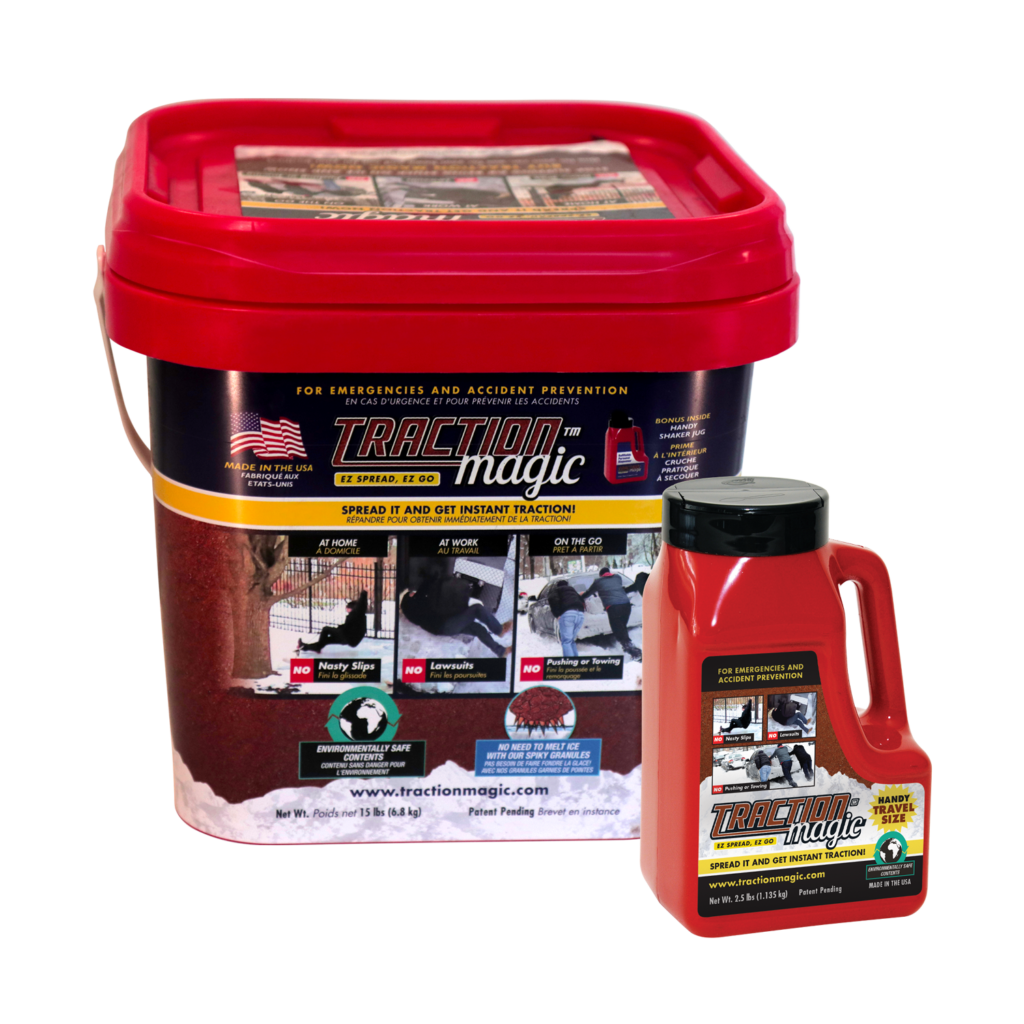New Concrete? Read This Before Applying Any Salt Or Ice Melt

Winters are fast approaching, and we have to prepare ourselves for the inevitable. We cannot have a lackadaisical attitude towards getting the correct ice melt for new concrete or snow removal equipment.
Understanding the Basics: Ice Melt for Concrete
First, let’s clarify the primary concern – what makes an ice melt safe for concrete? The ideal ice melt is one that is effective at melting ice, but won’t cause damage to the concrete or pose environmental risks. Many common ice melts, including those based on calcium chloride or magnesium chloride, can potentially harm concrete, especially if it’s new or not properly sealed.
Ice Melt for New Concrete: Essential Tips to Protect Your Surfaces
New concrete requires extra care, especially in its first year, to maintain its structural integrity. Choosing the right ice melt and adopting the best practices can prevent long-term damage while ensuring safety for your family, pets, and the environment.
Understanding the Curing Process of New Concrete
Concrete curing is a critical process where the material hardens and gains strength over time. Here’s what you need to know:
The Importance of the First 12 Months
During the first year, concrete remains vulnerable to surface damage. The curing process involves:
- Hydration: Water and cement interact to form a solid structure.
- Strength Development: Concrete achieves 70% of its strength in the first 28 days but continues to strengthen over several months.
Why Ice Melt Matters During Curing
Using harsh deicers like salt or chloride-based products during this period can:
- Weaken the surface.
- Increase the likelihood of scaling and flaking.
- Promote cracks through water absorption and refreezing.
The Freeze-Thaw Cycle and Its Impact on Concrete
The freeze-thaw cycle can wreak havoc on new concrete.
How It Works
- Water seeps into small pores in the concrete.
- Freezing temperatures expand the water, creating internal pressure.
- Repeated cycles weaken the concrete, causing cracks and surface damage.
The Role of Ice Melts
Traditional deicers exacerbate this process by increasing moisture retention. Opt for non-corrosive, chloride-free options like Safe Thaw, which prevents ice without compromising concrete strength.
Comparative Analysis of Deicing Agents
Choosing the right ice melt can save your concrete. Here’s a breakdown:
| Deicer | Effectiveness | Impact on New Concrete |
| Sodium Chloride | Moderate | Causes scaling and corrosion. |
| Calcium Chloride | Fast-acting | Accelerates water absorption and damage. |
| Magnesium Chloride | High | Less corrosive but still risky for new concrete. |
| Safe Thaw | High | Non-corrosive, eco-friendly, pet-safe. |
Environmental and Pet Safety Considerations
Environmental Impact of Traditional Deicers
- Chloride-based deicers pollute waterways and harm vegetation.
- Sodium chloride increases soil salinity, affecting plant health.
Why Pet-Safe Options Matter
Products like Safe Thaw ensure:
- No harm to paws or skin.
- Safety if ingested accidentally.
- A biodegradable, environmentally friendly solution.
Alternative Snow and Ice Removal Methods
Not all ice management requires chemicals. Consider these alternatives:
Physical Methods
- Shoveling: Effective for smaller areas but labor-intensive.
- Snow Blowers: Efficient for larger spaces but requires investment.
Traction Agents
- Sand: Provides grip but does not melt ice.
- Beet Juice Mixtures: Eco-friendly but less effective in extreme cold.
Preventative Measures for Ice Accumulation
Smart Strategies
- Proper Drainage: Prevents water pooling, reducing ice formation.
- Timely Snow Removal: Clears snow before it compresses into ice.
- Protective Sealants: Sealants create a barrier, reducing moisture penetration in new concrete.
Long-Term Maintenance of Concrete Surfaces
Maintaining concrete ensures durability and longevity:
Inspection and Repair
- Conduct annual inspections to identify cracks or chips.
- Fill cracks promptly to prevent further damage.
Cleaning and Sealing
- Use pH-neutral cleaners to avoid surface wear.
- Reapply protective sealants every 2–3 years for added protection.
Seasonal Precautions
- Avoid metal shovels that can scrape the surface.
- Opt for pet-safe, chloride-free ice melts like Safe Thaw.
When it comes to ice melt for new concrete, choosing the right product is crucial. We do not recommend using any ice melt on new concrete. Avoid chloride-based deicers and prioritize eco-friendly, pet-safe options like Safe Thaw. By understanding the curing process, mitigating the freeze-thaw cycle, and adopting preventative measures, you can protect your concrete for years to come. Safe Thaw id also a popular choice among homeowners looking for the best ice melt for pavers.
Walking on New Concrete and the Risks of Salt
New concrete is vulnerable because it hasn’t fully cured, a process that can take several weeks to complete. Walking on new concrete, especially if it’s covered in ice, can result in surface damage. So, how about using salt to de-ice new concrete? This isn’t recommended as salt can seep into the pores of the concrete, causing cracks and spalling when it re-freezes. Therefore, it’s important to understand that salt is not safe for new concrete.

Frozen Driveways? Melt the Ice Away with Safe Thaw!
Safe Thaw was created as the ice management solution for tough winter environments. Ideal in commercial and industrial properties, shops, government agencies, bridges, and construction.
There is always a question that crosses our mind when we think of concrete surfaces—can we use ice melt on new concrete? What are the different ways to remove snow and ice from new concrete without damaging it?
- New concrete is anything less than 12 months old.
- Ice melt usually comprises a blend of salt with other chlorides such as calcium chloride, magnesium chloride, etc. Any new concrete is susceptible to damage because the pores have not closed yet, and it is yet to get accustomed to the weather changes.
- Concrete is more fragile in its first year after being poured and smoothened. It takes at least 12 months to cure, settle, and gain strength to avoid cracking in due course. While concrete is durable, you have to care for it in the first year to increase its lifespan.
- Once you pour or apply ice melt on new concrete, it converts ice into slush or brine, thus making it slightly watery. The water seeps inside the concrete further, and the constant freeze/thaw cycle disturbs the strength of the concrete, thus leading to cracks.
- It is better to steer clear of ice melt on new concrete and only stick to traction agents such as Traction Magic to form a good grip while walking. You can alternatively use shovels or snowblowers to remove excessive snow.
Which Ice Melt is Safest for Concrete?
The answer is a product that’s effective yet non-corrosive, like Safe Thaw. It’s safe for all concrete surfaces, including new concrete, and won’t cause harm to pets or the environment. Safe Thaw’s patented dual-effect compound first melts ice and then provides a shield to prevent it from freezing for up to three days.
Safe Thaw- Safe Ice Melt For New Concrete
Safe Thaw is an eco-friendly ice melt recommended for concrete over 12 months old. Despite being an ice melt, it does not rust or cause any damage because it comprises all-natural ingredients, such as modified carbonyl diamide crystal, special glycols, non-ionic surfactants, traction agents, and special inhibitors. Once the crystals touch the icy surface, it lets out a deicing liquid that speeds up the melting process. As a result, it works well even in sub-zero temperatures. In addition, Safe Thaw prevents the water from refreezing, thus making the concrete surface non-slippery. It works on any surface, including jet-ways, train platforms, bridges, and roads.
Note: We do not recommend using any ice melt for new concrete, including Safe Thaw, within the first 12 months of pouring concrete. You must always test it on a small patch of stamped and unsealed concrete to ensure its stability.
100% Salt & Chloride-Free Ice Melt for Winter Storm Protection.
If you have recently got a concrete driveway or pathway made, we recommend a traction product such as Traction Magic to help form a better grip while walking or driving. Its anti-skid formula works on surface and area, including general pathways, office buildings, residential areas, sidewalks, and industrial areas. In addition, if you cannot use ice melt for new concrete, Traction Magic helps attain a balance to keep you safe in winter.
Conclusion
From calcium chloride ice melt industrial to regular salt, you have to be careful while using any ice melt on new concrete. It is not advisable to use it on any concrete surface that is not cured and less than a year old. It means the concrete has stabilized, and you can now ice melt to keep it clear of ice. It is not entirely safe to use ice melt; however, you may want to check for eco-friendly options, such as Safe Thaw, to help save your environment and landscape from any damage. Safe Thaw works wonders on cured and settled concrete over a year, thus giving you the desired results.

FAQs
Try Also Our Other Winter Safety Products:
Traction Magic
Stay safe on slippery surfaces with a product that’s 100% natural and safe for pets, people, and your property. Whether it’s sidewalks, steps, or even your car’s traction, Traction Magic is the go-to choice.

Walk On Ice
The handy disposable canister can be taken everywhere, with the same 100% naturally occurring minerals that provide instant traction on ice or snow. Use it on sidewalks, steps, or as an instant traction agent for your car.


